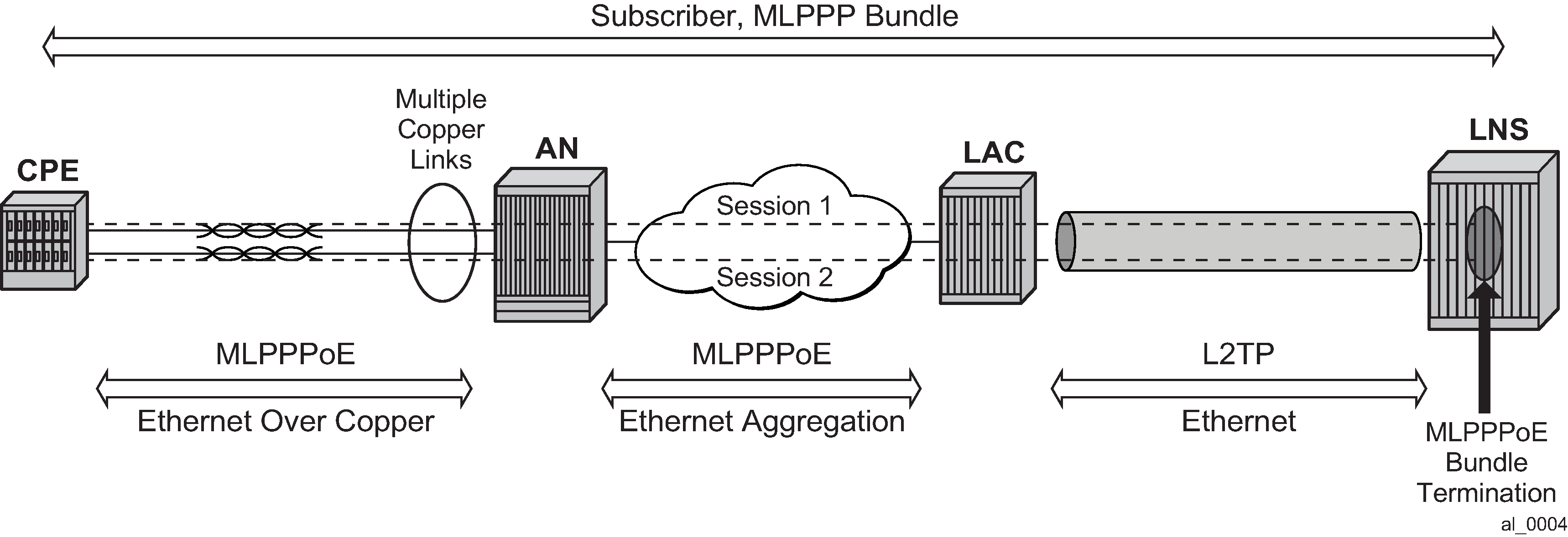The following session types in the last mile are supported:
MLPPPoE
Single physical link or multilink. The last mile encapsulation is Ethernet over copper (This could be Ethernet over VDSL or HSDSL). The access rates (especially upstream) are still limited by the xDSL distance limitation and therefore interleaving is required on a slow speed single link in the last mile. It is possible that the last mile encapsulation is Ethernet over fiber (FTTH) but in this case, users would not be concerned with the link speed to the point where interleaving and link aggregation is required.
Finally, this is the slow link of the last mile, the reason why LFI is performed in the first place. Assuming that LFI played its role in the network as designed, by the time the transmission of one fragment on this link is completed, the next fragment arrives just in time for unblocked transmission. In between the two fragments are one or more small high priority packets waiting in the queue for the transmission to complete.
As shown in Figure: MLPPPoE — multiple physical links, the AN-RG link in that packets P2 and P3 are ahead of fragments F2 and F3. Therefore the delay incurred on this link by the low priority packets is never greater than the transmission delay of the first fragment (50ms). The remaining two fragments, F2 and F3, can be queued and further delayed by the transmission time of packets P2 and P3 (which is normally small, in the example 3ms for each).


MLPPP(oEo)A — A single physical link or multilink. The last mile encapsulation is ATM over xDSL.
Figure: MLPPP(oE)oA — multiple physical linksoa_mult.png) Figure: MLPPP(oE)oA — single physical link
Figure: MLPPP(oE)oA — single physical linkoa_sngl.png)
Some other combinations are also possible (ATM in the last mile, Ethernet in the aggregation) but they all come down to one of the above models that are characterized by:
Ethernet or ATM in the last mile.
Ethernet or ATM access on the LAC.
MLPPP/PPPoE termination on the LNS.